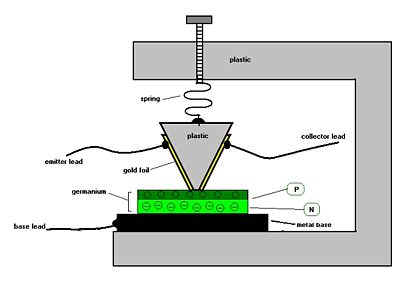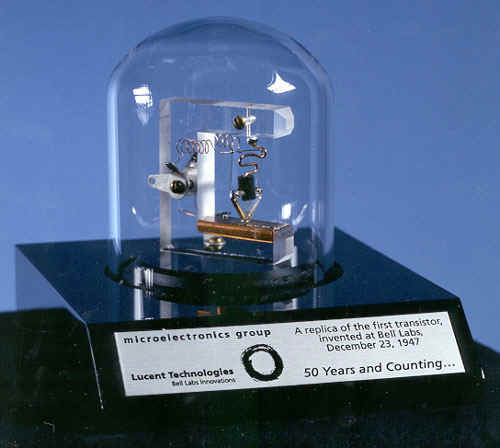

![]()
Whilst the first early electronic components emerged as single entities in a relatively small device family of the vacuum tube era, today's portfolio has blossomed to almost uncountable proportions. Early resistors, capacitors, coils and vacuum tubes started from their earliest stages of invention - difficult to manufacture by today's standards, poorly controlled in terms of tolerance accuracy and expensive due to the necessity for manually intensive production processes.
Early electronic products, such as broadcast AM radios were completely hand assembled from a limited range of component types. At first, only the most wealthy of people could afford such products but the demands of the world war machines propelled mass production concepts forward into the waiting arms of consumerism. Military communication needs spurned requirements for the mass production of electronic valves and associated passive components, resulting in many left over "surplus components" after the tides of conflict passed. Having secured manufacturing procedures (e.g. assembly lines) enshrined in philosophies of low cost production on a massive scale, the collective mind of human endeavor turned its ambitions from the strain of battle to an ever straining lust for profit.
Material research resulted in better performance in components already used, research into product fabrication techniques resulted in the replacement of hand wired valve socket technology with Printed Circuit Board (PCB) construction. Although no direct technology evolution is easily discernable from vacuum tube technology to solid state semiconductor technology, consumerism demands prompted the imagination towards other means of signal amplification and processing. Perhaps more by accident than design the semiconductor "transistor" was born.
The first patent application referred to a Field Effect Transistor (FET) filed in Canada by Austrian-Hungarian physicist Julius Edgar Lilienfeld on October 22, 1925. No research articles were published and so this application was ignored by others. In 1934 German physicist Oskar Heil patented another field-effect transistor but whether any devices were actually built remains debatable. (Although one of Lilienfeld's designs was actually built in the 1990's and showed useful amplification - too little too late I guess).
As often happens in research, the path towards progress parades a jagged and twisting journey. Despite early propositions, it took another quarter century before John Bardeen, Walter Houser Brattain and William Bradford Schockley at Bell Laboratories developed their solid state "alternative" to the vacuum tube triode in December 1947.


Despite some antagonism between the trio, the first "point contact transistor" revolutionized the ambition of electronic technology with the promise of miniaturization and low power requirement. The commercial life of the point contact transistor was short lived however, perhaps cut short through the vengeful motivation of Schockley hell bent on proving himself to have been the brains of the trio, resulting in his invention of the modern "Bipolar Junction Transistor" or BJT that quickly ousted the point contact transistor from its transient reign.
Further innovations built one stone upon the foundations of another as technology towered skyward. Integrated Circuit devices followed, combining active transistors and associated passive components all fabricated on a common semiconductor substrate. The first patent applications appears to have been filed by a German engineer Werner Jacobi in April 1949, consisting of a three stage audio amplifier intended for hearing aid applications.
So we witness now our current phase of meteoric development in this Component Universe. The web chapters I am presenting, I hope, will illustrate the smorgasbord of electronic ingredients poised for commercial, industrial and electronics enthusiast's consumption.
The previous web chapters focus on particular component categories, e.g. resistors, capacitors, inductors, diodes, transistors and so on. I will include some theory but my main emphasis is to show "what's out there" based on published component data excerpts. Maybe this represents some free advertising for component manufacturer's as I only intend to identify those with good reputations in this Component Universe.
Given that the range of component varieties shows no signs of slowing down, my web pages on these subjects will probably evolve in parallel
This web page represents a title page for my articles presented in more detail and divided into specific component categories. I think I'll continue to add to the portfolio as time goes on.
If any visitors to my site would like me to add content on components that are particularly interesting to themselves please email me at ian.scott@xtra.co.nz and I will be happy to incorporate such requests were possible.
In the meantime, I hope my following web chapters from the Component Universe are informative, interesting and useful to all !
![]()
Return to: Ian Scotts Technology Pages
© Ian R Scott 2007 - 2008